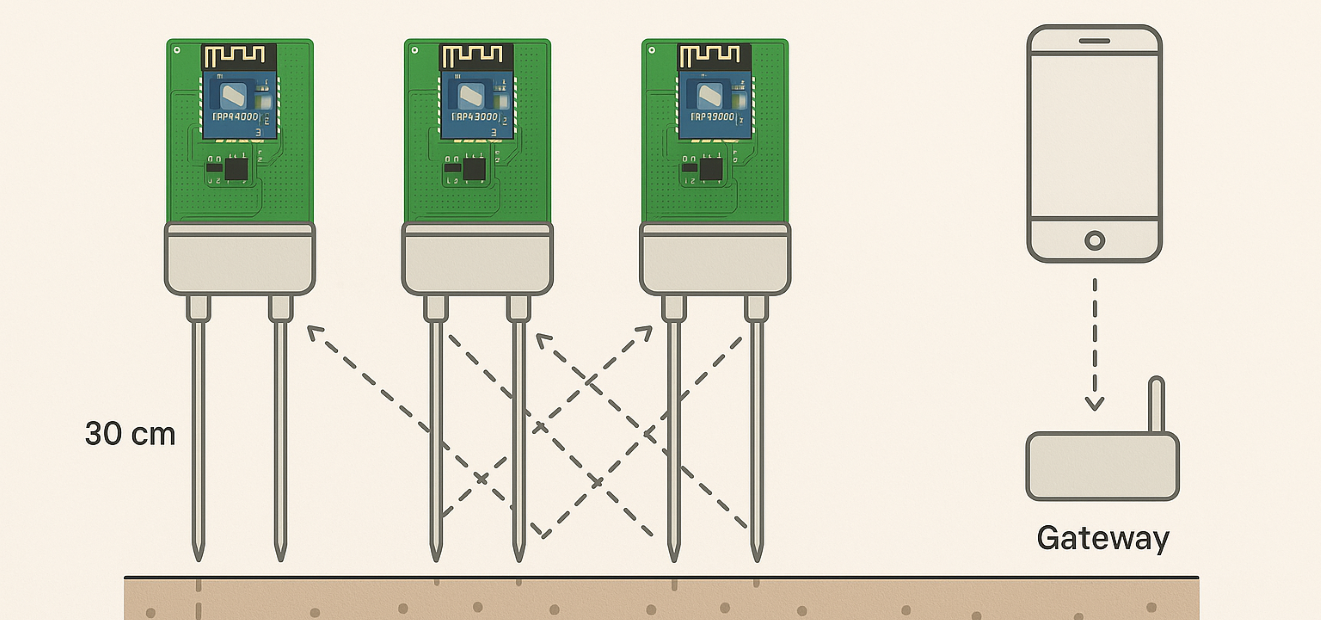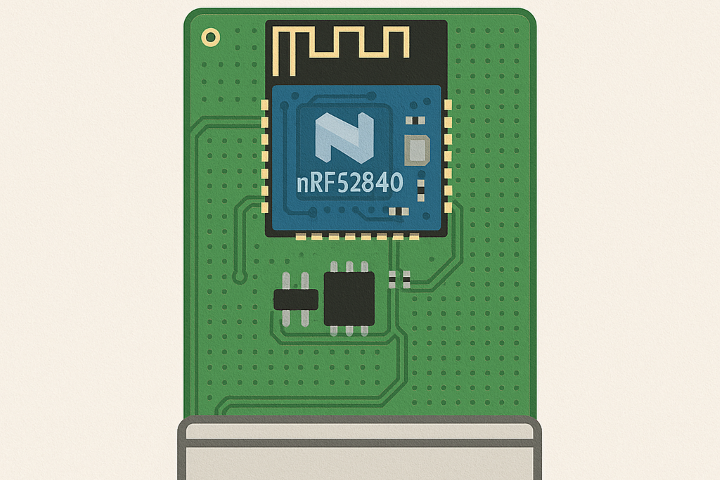

Self-healing BLE mesh sensors deliver soil and water data with year-long battery life for precision irrigation.
The BLE mesh sensor network described here overcomes a long-standing agritech challenge—streaming soil and water data from buried or mobile probes without draining batteries or losing packets. By forming a self-healing mesh, every node relays readings until a phone or gateway is nearby, guaranteeing uninterrupted insight for growers.
Solution Highlights
- Nordic nRF52840 SoC running LE Coded PHY for kilometre-class Bluetooth coverage.
- PCB-mounted antenna tuned for high-permittivity wet soil.
- Flash buffering that stores thousands of samples and syncs when an Android or iOS app enters range.
Quantifiable Results
- 12-month battery life at 10-minute intervals.
- 98 % end-to-end packet success from unit buried 30 cm deep.
- Firmware architecture adaptable to LoRa back-haul for remote estates.
Before this solution, farmers lacked a dependable way to capture underground soil data in real time. Bluetooth signals weakened in wet soil, batteries expired within weeks, and crews spent hours locating sensors simply to off-load logs or replace power cells. Without reliable insights, irrigation decisions were guesswork, leading to wasted water, inconsistent crop quality and higher operating costs.

We developed and tested a BLE mesh sensor network powered by Nordic's nRF52840 SoC paired with the nRF21540 RF front-end module. This setup leveraged **Coded PHY for range extension** and low-power transmission. Sensors captured environmental metrics which were then transmitted over BLE characteristics to mobile applications. The system was further evaluated for underground mesh reliability, with hardware designed for soil-embedded deployment.
Key features included:
- BLE Coded PHY evaluation for subsoil data transmission
- RF amplification using nRF21540 for long-range support
- BLE Mesh feasibility for multi-node underground networks
- End-to-end prototype development and testbed deployment
We addressed these challenges by building a BLE sensor architecture that uses Coded PHY to increase signal resilience. The project began by validating the feasibility of reading sensor data directly into the nRF52840 module and transmitting it over extended-range PHY modes. To further enhance reach, we incorporated the nRF21540 RF front-end, effectively boosting link margin.
BLE characteristics were structured for efficient data packet delivery to a mobile application, simulating field-side user interfaces. Recognizing the need for scale, we prototyped BLE Mesh configurations where devices could relay peer data—even underground. Hardware was custom-designed to accommodate soil permeability, and all systems were rigorously tested in simulated and real-world environments.
This implementation offers a sustainable model for agricultural sensor networks and scalable deployment potential. It unlocks the ability to lay out a field-wide sensor mesh without extensive infrastructure, reducing setup costs and maintenance effort. The BLE mesh feasibility also sets the stage for long-term deployments in large estates or distributed smart farms, offering a strategic leap in environmental monitoring precision.
A wet-soil-tuned antenna and adaptive sleep cycles let each node operate a full year on two AA batteries while maintaining 98 % data reliability.


Scan Me!
If you have any questions or need help, please contact us
Need a similar Embedded or IoT Solution?
Tell us about your use case — our engineers will get back within 1 business day.
Fill out the form below to understand your requirements.
Thank you! Your submission has been received!
Oops! Something went wrong while submitting the form.

